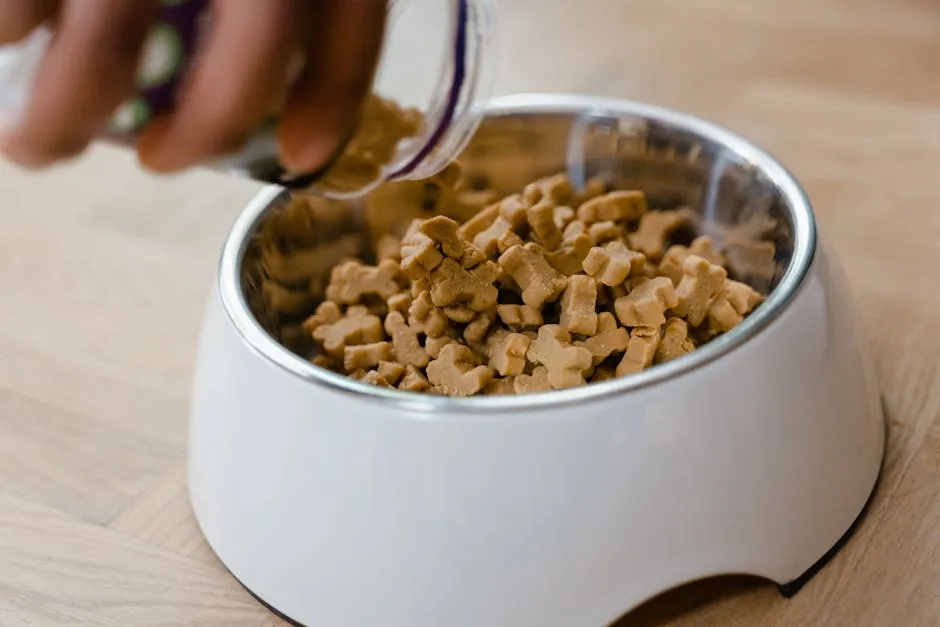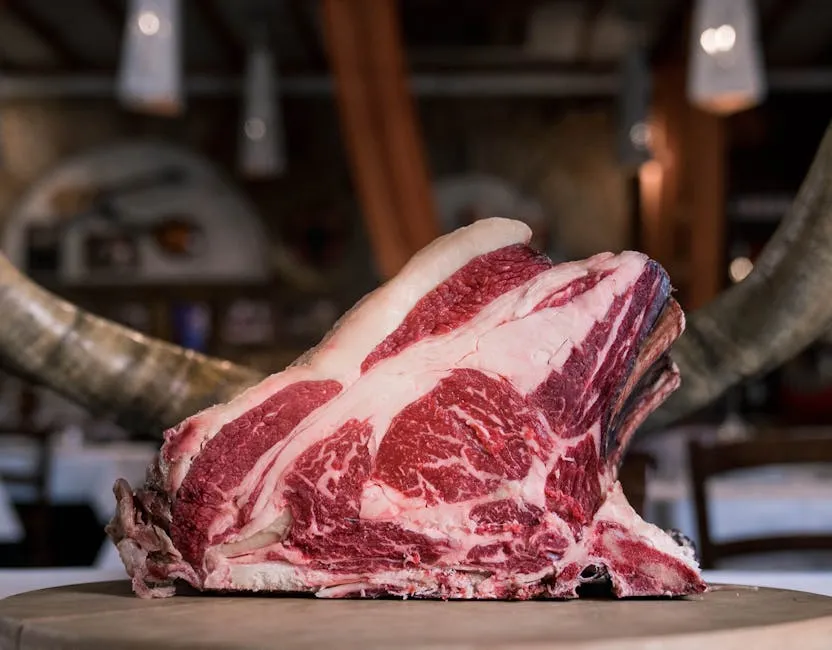Introduction
Organ meat is an often-overlooked yet valuable component of a dog’s diet. Packed with essential nutrients, it can enhance your furry friend’s health and vitality. Many misconceptions exist about organ meats, leading some to avoid them. In this guide, we’ll clarify their importance and explore how to safely incorporate them into your dog’s meals.
To ensure your dog’s meals are both nutritious and tasty, consider investing in a Dog Food Storage Container. It keeps your pup’s food fresh and free from pests—because we all know how much dogs love a good snack, even if it’s not meant for them!

Summary and Overview
Organ meats, such as liver, heart, and kidneys, are nutrient-rich foods that offer significant health benefits for dogs. They contain high levels of vitamins, minerals, and proteins essential for your dog’s well-being. Including organ meats in your pet’s diet can support immune function, energy levels, and overall health. However, caution is necessary, as overconsumption may lead to toxicity or dietary imbalances. It’s vital to introduce these meats gradually and maintain a balanced diet to ensure your dog thrives.
As you navigate the world of dog nutrition, consider adding some Organic Dog Treats to your shopping list. They’re a delicious way to reward your pup while ensuring they’re getting wholesome ingredients—because who doesn’t love a treat now and then?

The Nutritional Value of Organ Meats
Organ meats are nutrient-dense, packed with vitamins and minerals. They often outshine muscle meats in essential nutrients. For instance, liver is an excellent source of vitamin A, which supports vision and immune health. It also contains B vitamins like B12, crucial for energy metabolism.
Kidneys are rich in iron, zinc, and selenium, promoting red blood cell production and immune function. Hearts provide a good amount of Coenzyme Q10, enhancing heart health and energy levels. These organs offer a variety of benefits, making them key components of a balanced dog diet.

When comparing nutrient profiles, liver stands out for its high vitamin A content. Kidneys shine with their iron and zinc levels. Hearts contribute essential fatty acids and B vitamins. Incorporating these organ meats into your dog’s meals can boost their overall health and vitality.
Types of Organ Meats Suitable for Dogs
Several organ meats are safe and beneficial for dogs. The most common include liver, heart, kidneys, tripe, and lungs. Each type offers unique advantages for your furry friend.
Liver is a powerhouse of nutrients, rich in vitamins and minerals essential for energy and immune function. Heart is packed with protein and CoQ10, supporting cardiovascular health. Kidneys provide vital nutrients, including iron and zinc, aiding in red blood cell production.
Speaking of health, don’t forget the importance of Dog Vitamins and Supplements. These little gems can help fill in any nutritional gaps and keep your pup feeling their best, especially if they’re picky eaters!
Sourcing Quality Organ Meats
When sourcing organ meats for your dog, quality is key. Always opt for fresh organ meats to ensure your pup receives the best nutrients. Look for suppliers who prioritize humane and sustainable practices. Local butchers or farmers’ markets often provide high-quality options. These sources typically have better standards than mass-produced meats.
It’s important to avoid processed organ meats. They may contain preservatives or fillers that are harmful to dogs. Always ask about the source of the organ meats. You want to ensure they come from healthy animals, as this reduces the risk of toxins. Freshness plays a vital role in nutritional value. Purchasing in bulk and freezing extra portions can help maintain quality.

And what about keeping your dog healthy on the go? A Portable Dog Water Bottle can ensure your dog stays hydrated during your adventures together. Because, let’s face it, nobody wants a thirsty pup on a hike!
How to Incorporate Organ Meats into Your Dog’s Diet
Recommended Feeding Practices
Introducing organ meats into your dog’s diet should be done gradually. Start with small amounts to gauge your dog’s reaction. A teaspoon of liver or heart mixed into their regular food is a great way to begin. Monitor for any digestive issues, such as diarrhea or vomiting.
As your dog adjusts, you can increase the portion slightly. Aim to have organ meats make up about 10% of their overall diet. This balance helps prevent potential toxicity. It’s also wise to limit liver to no more than 5% of the diet due to its high vitamin A content.

For those moments when you need a little help training your pup, a Dog Training Clicker can be a game changer! It’s an effective way to reinforce positive behavior and make training a breeze.
Cooking vs. Raw Feeding
Feeding organ meats can be done either raw or cooked, and both methods have their pros and cons. Raw organ meats retain the most nutrients and are often more palatable for dogs. However, there are safety concerns with raw feeding. Bacteria and parasites can be present in raw meat, posing health risks.
If you choose to feed raw, ensure the meats are sourced from reputable suppliers. Freezing them for at least two weeks can kill harmful parasites. Cooked organ meats eliminate the risk of pathogens. Cooking also makes them easier to digest for some dogs.

On the downside, cooking can reduce some nutrient levels. If you opt for cooked organ meats, avoid overcooking to retain as many nutrients as possible. Ultimately, the best choice depends on your dog’s health, preferences, and your comfort level with raw feeding. Always consult with a veterinarian when making dietary changes, ensuring your dog’s nutrition remains balanced and safe.
Potential Risks and Concerns
Health Risks
Feeding organ meats to dogs has its risks. One major concern is pathogens. Raw organ meats can harbor bacteria and parasites. These can lead to serious health issues. Always ensure the organ meats are sourced from healthy animals.
Overfeeding organ meats can also cause toxicity. Organs like liver are rich in vitamin A. Too much can lead to hypervitaminosis A, a dangerous condition. Dietary imbalances may occur if organ meats replace balanced meals. A diet too high in organ meats can lead to deficiencies in other essential nutrients.

To combat those pesky odors that sometimes accompany feeding organ meats, a Pet Odor Eliminator Spray can be a lifesaver! It helps keep your home smelling fresh despite your dog’s gourmet diet.
Individual Considerations
Each dog has unique dietary needs. Factors like age, breed, and health status can influence these needs. For instance, some breeds may have specific sensitivities to certain organ meats. Dogs with pre-existing health conditions may require special diets, making it essential to consider these factors.
Before adding organ meats, consult your veterinarian. They can help assess whether organ meats suit your dog’s specific needs. A vet will consider your dog’s overall health and nutritional requirements. This ensures your furry friend receives a balanced diet tailored to their individual needs.
Organ Meats in Commercial Dog Food
Many commercial dog foods include organ meats in their recipes. However, the quality can vary significantly. High-quality brands prioritize fresh, nutrient-rich organ meats. They provide essential vitamins and minerals that support your dog’s health. For more detailed information on reading labels for commercial dog food, check out our how to read nutrition labels on commercial dog food guide.

Understanding how to read labels is crucial for ensuring your dog gets high-quality nutrition from their food. how to read nutrition labels on commercial dog food
On the other hand, low-quality brands may use fillers or by-products. These can dilute the nutritional value of the food. Always read ingredient labels to ensure you are choosing quality options. Investing in a Dog Food and Water Dispenser can also streamline mealtime and keep your dog hydrated and happy!
High-quality organ meats can enhance the overall nutritional profile of your dog’s diet. They serve as a great source of nutrients that support energy levels, immune function, and overall health. Investing in good commercial dog food can make a significant difference in your dog’s well-being.

Conclusion
Incorporating organ meats into your dog’s diet is essential. These nutrient-rich foods provide vitamins and minerals that support overall health. They can boost energy levels, improve immune function, and maintain healthy skin and coat. However, it’s important to introduce these meats gradually and in moderation. Pay attention to your dog’s reactions and adjust accordingly. Always prioritize safety by sourcing high-quality organ meats. By being mindful, you can enhance your dog’s diet while ensuring they enjoy the benefits of these nutritional powerhouses.

For added comfort, consider a cozy Dog Bed where your pup can rest after a satisfying meal. A happy dog is a well-rested dog!
FAQs
Can all dogs eat organ meats?
Most dogs can eat organ meats, but some breeds may have sensitivities. Dogs with specific health conditions should be monitored closely. Always consult your veterinarian to ensure it’s suitable for your dog.
How much organ meat should I feed my dog?
Organ meats should make up about 10% of your dog’s diet, with liver comprising no more than 5%. Start with small portions and adjust based on your dog’s tolerance and health.
Is it safe to feed dogs raw organ meats?
Raw organ meats can pose risks due to bacteria and parasites. If you choose to feed raw, ensure proper sourcing and consider freezing for safety. Cooking organ meats can eliminate these risks.
What are the best organ meats for dogs?
Liver, heart, kidneys, and tripe are excellent choices. Liver is high in vitamins, heart supports cardiovascular health, kidneys provide essential nutrients, and tripe aids digestion.
Can organ meats replace commercial dog food?
Organ meats should complement a balanced diet, not replace commercial food entirely. They provide essential nutrients but lack the complete nutrition found in high-quality dog food.
Please let us know what you think about our content by leaving a comment down below!
Thank you for reading till here 🙂
All images from Pexels





